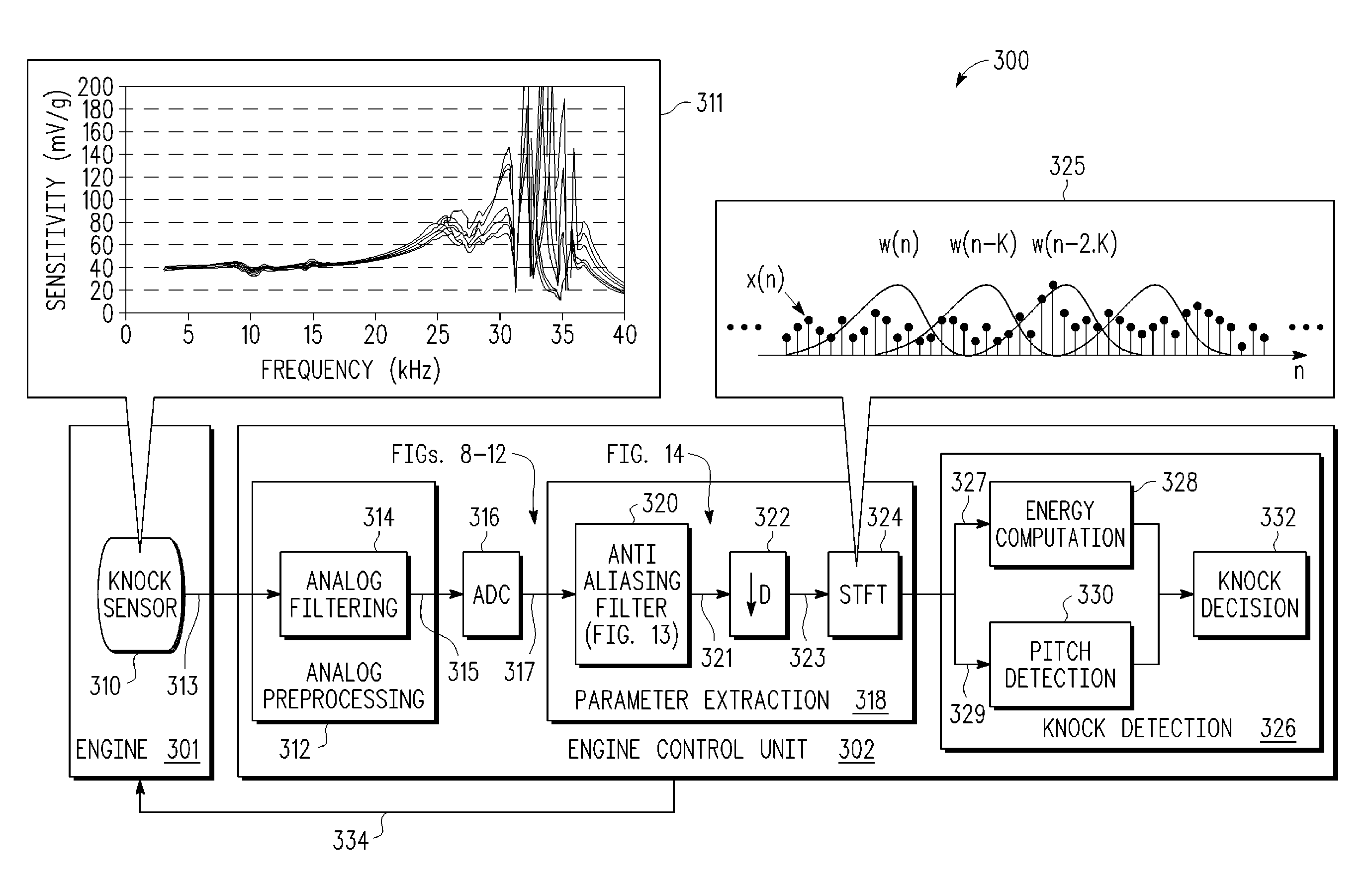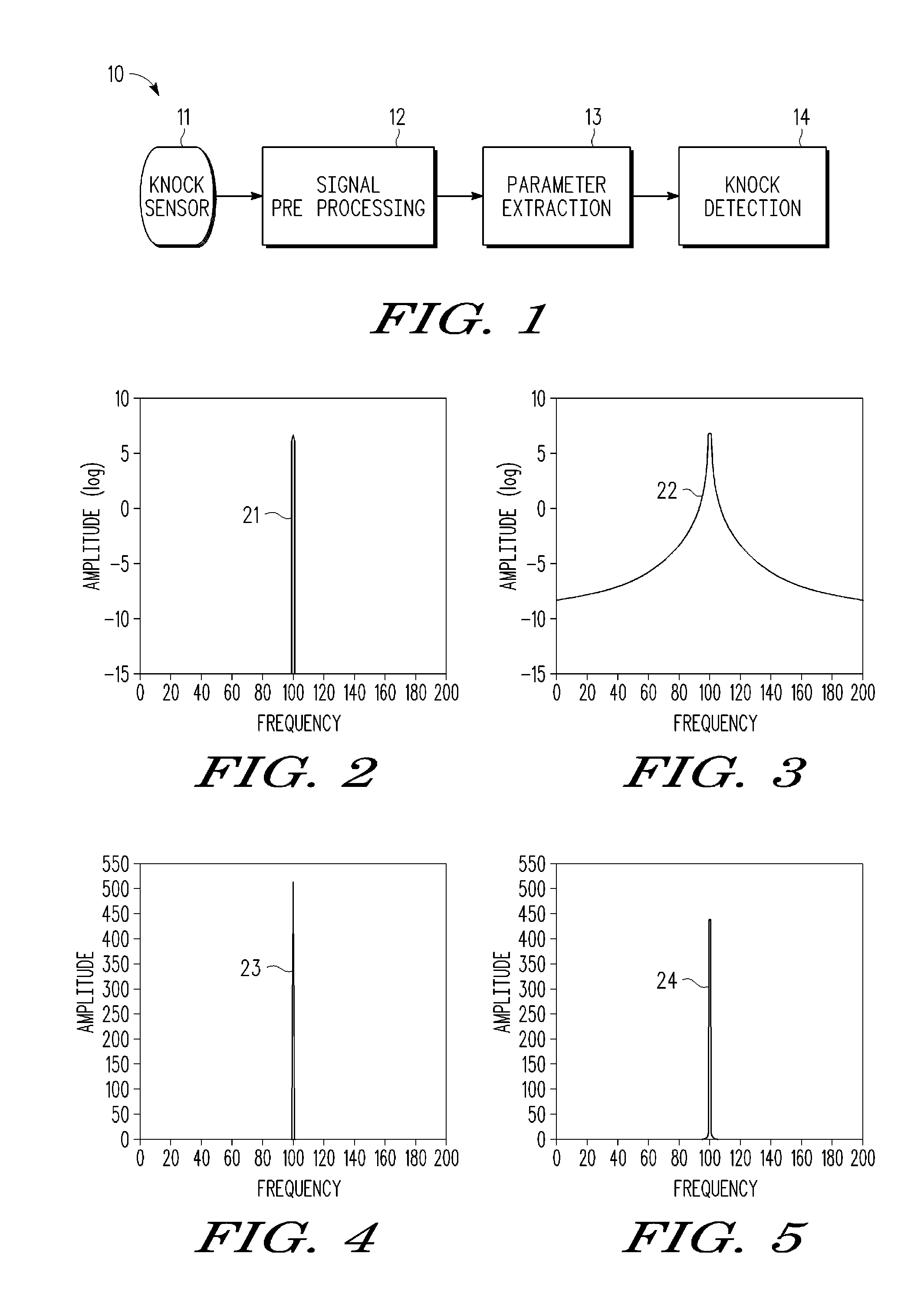Knock signal detection in automotive systems
a technology of automotive systems and knock signals, applied in the field of internal combustion engines, can solve the problems of increasing the demand for efficient fuel consumption, increasing the pollution of engine parts, and increasing the cost of gasoline supplies
- Summary
- Abstract
- Description
- Claims
- Application Information
AI Technical Summary
Benefits of technology
Problems solved by technology
Method used
Image
Examples
Embodiment Construction
[0027]An engine knock signal processing system and methodology are described for use in efficiently and accurately detecting knock events in an internal combustion engine. Using non-intrusive sensors (such as accelerometers) to detect engine knock signals, the intensity of vibrations induced in the combustion chamber by knock events can be measured. After lowpass filtering, the measured vibration signal is converted from analog to digital form, allowing digital processing techniques to be applied to extract parameters for detecting the presence of knock events in the signal. Parameters are then extracted by applying an anti-aliasing filter, decimating the filtered signal (e.g., by a factor D) and using a time-frequency technique (such as STFT) to transform the decimated filtered signal into a bi-dimensional representation as a function of time and frequency. By decimating the filtered signal to reduce its sampling frequency, the computational load on the processor is reduced as the ...
PUM
 Login to View More
Login to View More Abstract
Description
Claims
Application Information
 Login to View More
Login to View More - R&D
- Intellectual Property
- Life Sciences
- Materials
- Tech Scout
- Unparalleled Data Quality
- Higher Quality Content
- 60% Fewer Hallucinations
Browse by: Latest US Patents, China's latest patents, Technical Efficacy Thesaurus, Application Domain, Technology Topic, Popular Technical Reports.
© 2025 PatSnap. All rights reserved.Legal|Privacy policy|Modern Slavery Act Transparency Statement|Sitemap|About US| Contact US: help@patsnap.com



